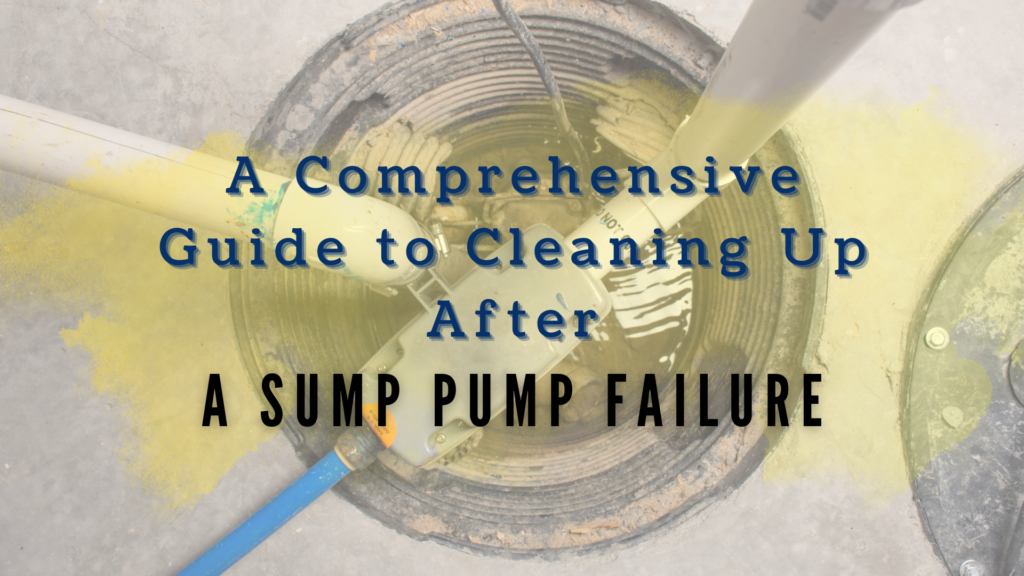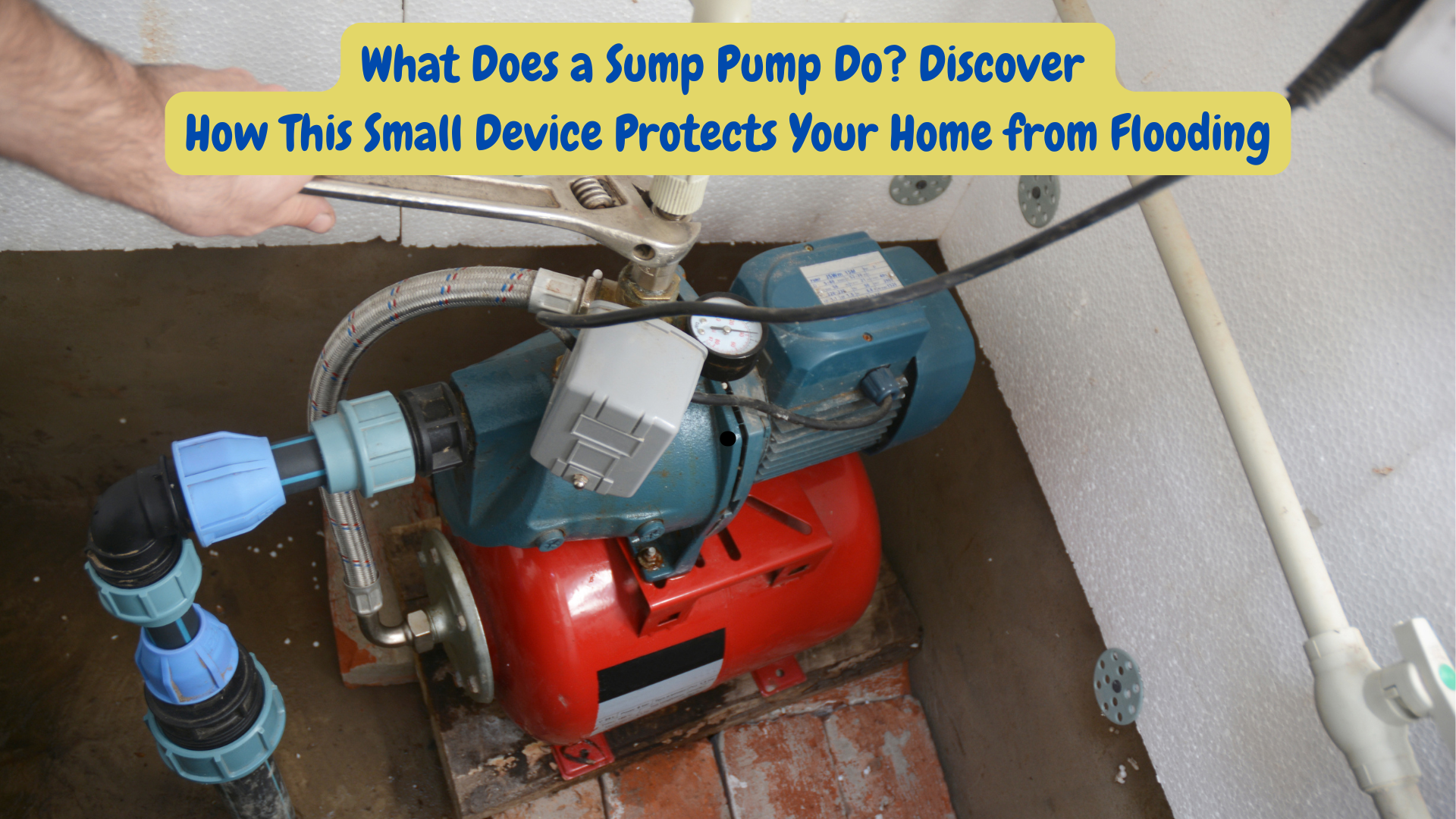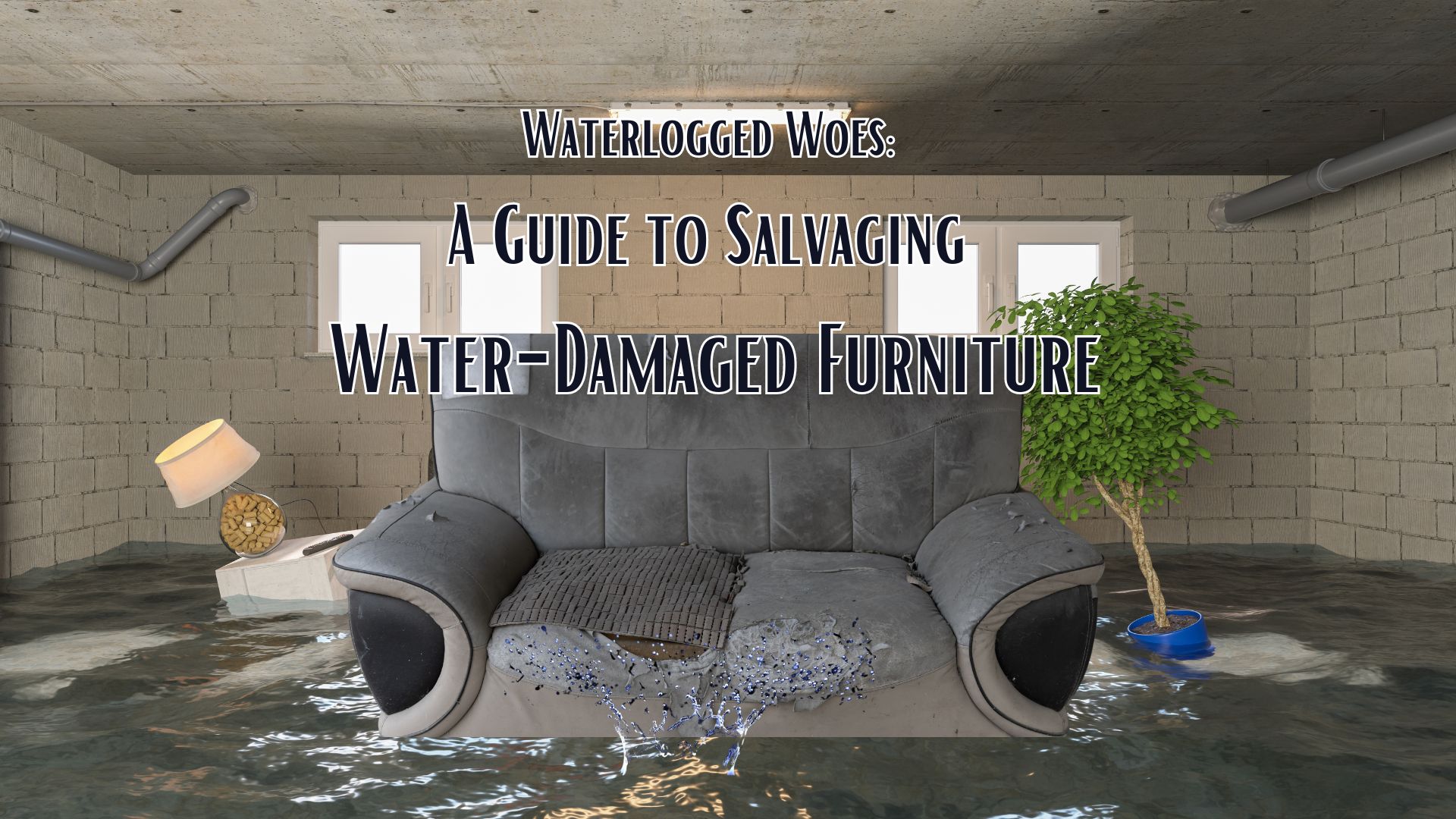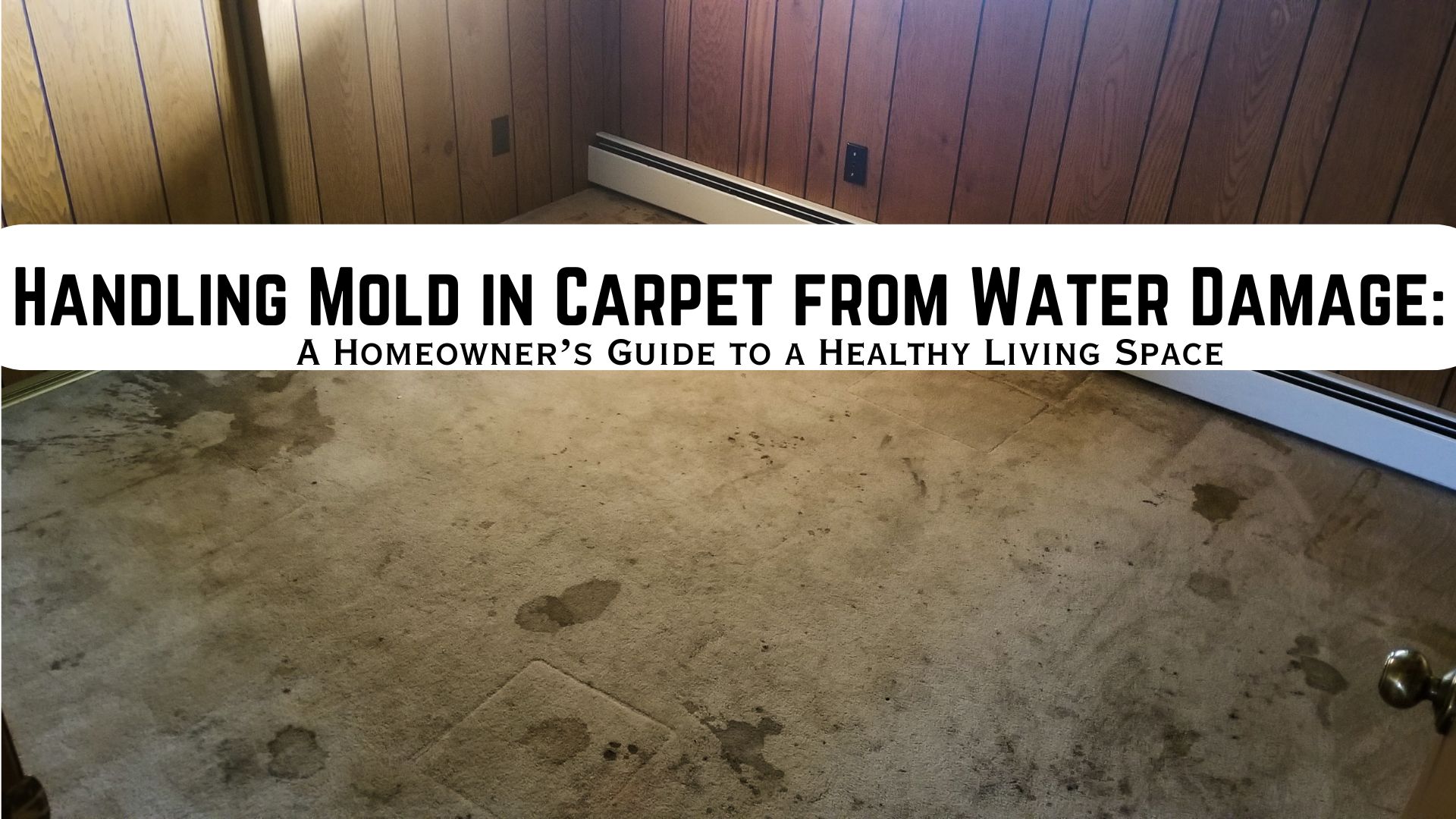Sump pumps play a crucial role in protecting your basement or crawl space from flooding caused by excess groundwater. However, even the most reliable sump pump can fail, leaving you with a messy and potentially damaging situation to clean up. In this comprehensive guide, we will provide you with detailed steps and essential tips to effectively clean up after a sump pump failure – minimizing water damage and restoring your space to its former dry state.
Guide #1: Understanding Sump Pump Failure
The Role of a Sump Pump
A sump pump is a tool designed to protect basements from flooding. It's placed in a pit in the basement floor, called a sump pit. When water enters the pit, the pump automatically turns on and removes the water, keeping the basement dry.
Here's a simple breakdown:
- Purpose: A sump pump stops the basement from getting flooded by removing excess water.
- How it works: It sits in a pit and turns on when water enters. It pumps the water away from the basement.
- Why it's important: It protects the basement from water damage, like mold or structural problems.
- Types: There are two types—submersible (goes underwater) and pedestal (motor above water).
- Automatic: It turns on by itself when the water rises, even if you're not there.
- Backup: Some pumps have batteries or water-powered backups in case of power outages.
- Maintenance: Regularly check the pump, clean the pit, and make sure the water is directed away from the house.
Causes of Sump Pump Failure
a) Power Outages: Sump pumps rely on electricity to function. If there is a power outage during heavy rainfall or flooding, the pump won't be able to operate which may lead to basement flooding.
b) Mechanical Malfunctions: Sump pumps consist of various mechanical components that can wear out or break over time. This includes issues with the motor, impeller, or float switch.
c) Switch Problems: The float switch is responsible for activating the sump pump when the water level rises. If the switch becomes stuck, jammed, or malfunctions, it can prevent the pump from turning on or off as intended.
d) Overwhelmed Pumps: If there is an excessive amount of water entering the sump pit, the pump may become overwhelmed and fail to keep up with the water flow, resulting in flooding.
Signs of Sump Pump Failure
a) Unusual Noises: Grinding, rattling, or other unusual sounds from the sump pump can indicate mechanical issues or damage.
b) Excessive Vibrations: Excessive vibrations during operation may indicate misalignment or damage to the pump's components.
c) Constant Running: If the sump pump runs continuously without shutting off, it may be a sign of a malfunctioning float switch or an overwhelmed pump.
d) Lack of Activation: If the pump doesn't activate when the water level rises, it suggests a problem with the switch or motor.
e) Basement Dampness or Flooding: If you notice water seepage or flooding in your basement, it could indicate that your sump pump is not functioning correctly.
Preventing Sump Pump Failure
a) Regular Maintenance: Perform routine maintenance, including cleaning the sump pit, removing debris, and checking for any visible signs of damage or wear.
b) Backup Power Source: Install a battery backup system or a generator to ensure that your sump pump can continue operating during power outages.
c) Test the Float Switch: Periodically test the float switch by pouring water into the sump pit to ensure that it activates the pump correctly.
d) Check Pump Operation: Test the pump by pouring water into the pit and observing its functionality. Ensure it starts and stops as expected.
e) Install a Check Valve: A check valve prevents water from flowing back into the sump pit after the pump has turned off, reducing the risk of excessive cycling and prolonging the pump's lifespan.
f) Consider a Secondary Pump: Installing a secondary sump pump provides an additional layer of protection in case the primary pump fails or becomes overwhelmed.
g) Professional Inspection: Schedule regular inspections by a professional to detect any potential issues early and address them promptly.
Guide #2: Preparing for Cleanup After a Sump Pump Failure
Ensuring Safety
a) Turn off power: Before cleaning, switch off the power in the affected area to avoid electric shock.
b) Wearing Protective Gear: Use gloves, boots, goggles, and a mask to protect against harmful substances in the water.
c) Check for hazards: Look for structural damage, mold, or exposed wires. If it's unsafe, wait for professionals.
Assembling Cleanup Supplies
To efficiently clean up after a sump pump failure, gather the following tools and equipment:
a) Wet/Dry Vacuum: Use a vacuum made for water to remove it from the area.
b) Sump Pump: If the main pump failed, use a backup or portable pump to remove standing water.
c) Fans and Dehumidifiers: Place fans to improve air circulation and use dehumidifiers to prevent mold.
d) Mops, Buckets, and Sponges: Use these tools to wipe up water and moisture.
e) Cleaning Agents: Depending on the damage, use disinfectants or mildewcides to sanitize surfaces.
f) Protective Sheets or Tarps: Cover furniture to avoid further damage during cleanup.
Securing Professional Help
In certain situations, it's important to know when to call a professional water damage restoration service:
a) Extensive Damage: Call professionals for large-scale cleanup and restoration.
b) Mold Growth: Professionals can safely remove and remediate mold.
c) Sewage Backup: If the water contains sewage or has a foul odor, professionals can handle it safely.
d) Structural Damage: Get professionals to assess and repair the damage.
e) Insurance Claims: Professionals can document the damage for insurance purposes and assist with the claims process.
Guide #3: Removing Water
- Assessing the Water Level
- Extract water using these methods:
- Submersible Pump for significant water levels.
- Wet/Dry Vacuum for smaller amounts of water. Ensure that the vacuum is designed for water removal and follow the manufacturer's instructions for proper usage.
- Buckets or containers for shallow water levels. Empty the buckets outside or into a suitable drainage system.
Remember to start with the most appropriate method for the situation and consider using a combination of techniques if needed.
- Dispose of water properly:
When disposing of the extracted water, it's important to follow local regulations and guidelines to ensure proper disposal. Here are some general guidelines:
- Drainage if allowed, away from property and environment. Ensure that the water doesn't create further damage or pose a risk to neighboring properties or the environment.
- Consult local authorities for sewer system disposal.
- Professional disposal of contaminated or sewage water. Contact local water authorities or professional water damage restoration services for guidance.
- Dry the area to prevent mold and damage:
After removing the standing water, it's important to dry out the affected area thoroughly to prevent mold growth and further damage. Here are some drying techniques:
- Use fans strategically for better air circulation.
- Use dehumidifiers to reduce humidity levels.
- Open windows and doors for natural ventilation.
- Consider professional-grade air movers for severe cases.
Monitor the drying progress regularly and adjust the positioning of fans and dehumidifiers as necessary. It's important to ensure that the affected area is thoroughly dry to prevent mold growth and further damage.
Guide #4: Evaluating Damage
Inspecting Structural Damage
After a sump pump failure, it's important to inspect the structural elements of your property for any signs of damage caused by the water. This includes walls, flooring, ceilings, and other components. Look for the following:
a) Water stains on walls, ceilings, and flooring.
b) Warping, buckling, or swelling of walls, baseboards, or flooring.
c) Cracks, bulges, or separation in walls, especially drywall.
d) Softness or deterioration of wood, drywall, or other materials.
Identifying structural damage is crucial for planning repairs and addressing potential safety concerns.
Assessing Personal Belongings
In addition to structural elements, it's important to assess the damage to your personal belongings and the contents of the affected area. Consider the following:
a) Check furniture for swelling, warping, or stains.
b) Be cautious with water-damaged appliances and electronics; have them inspected before use.
c) Evaluate the condition of personal items like clothing, books, photos, and documents.
Salvage and dry items that are not heavily damaged promptly.
Documenting the Damage
Documenting the damage is crucial for insurance claims and future reference. Take the following steps:
a) Take clear photos or videos of affected areas, structural damage, and damaged belongings.
b) Create a detailed inventory of damaged items, including descriptions and values.
c) Keep records of correspondence with insurance companies, contractors, and professionals. Preserve estimates, invoices, and other relevant documents.
Guide #5: Cleaning and Disinfecting
Preparing for Cleaning
Before starting the cleaning process, it's important to gather the necessary cleaning supplies to ensure an effective and safe cleanup. Here are some items to consider:
a) Personal Protective Equipment (PPE) like gloves, masks, and protective clothing
b) Cleaning supplies like buckets, brushes, sponges, and cleaning cloths to aid in the cleaning process
c) Mild detergents, all-purpose cleaners, and disinfectants appropriate for the surfaces you'll be cleaning
d) Water and mop
Having the right supplies ready will help streamline the cleaning process and ensure thorough sanitation.
Cleaning Hard Surfaces
To clean and disinfect hard surfaces affected by water damage, follow these step-by-step instructions:
a) Remove debris from hard surfaces using a brush or broom.
b) Clean surfaces with a mild detergent and water, focusing on stains and dirt. Rinse surfaces with clean water.
c) Apply a suitable disinfectant and follow the product instructions.
d) Allow surfaces to air dry completely to prevent mold growth.
Note: Different surfaces may require specific cleaning techniques or products. Refer to manufacturer instructions or seek professional advice if needed.
Salvaging Personal Belongings
To salvage and clean personal belongings affected by the sump pump failure, consider the following tips:
a) Clean furniture with mild detergent and water. Consult professionals for heavily damaged upholstered furniture.
b) Extract water from carpets and rugs with a wet/dry vacuum. Clean and disinfect them using suitable products. Consider professional cleaning for severe damage.
c) Launder clothing, linens, and fabrics in a washing machine using appropriate settings and cleaning agents. Dry them thoroughly.
d) Clean and disinfect personal items like books, toys, and kitchenware with mild detergent and disinfectants. Seek professional restoration for valuable or delicate items.
Mold Prevention
To prevent mold growth and understand the risks associated with mold exposure, consider the following strategies:
a) Thoroughly dry the affected area and items to prevent moisture buildup. Promote air circulation and drying using fans, dehumidifiers, and open windows.
b) Ensure proper ventilation to prevent excess moisture.
c) Keep indoor humidity levels below 60% and consider using dehumidifiers in humid areas.
d) Act promptly to address water damage or moisture issues and prevent mold growth.
e) Consider professional mold inspection and remediation if needed or if musty odors persist.
Guide #6: Removing Damaged Materials
Identifying Mold Infestation
To effectively address mold growth, it's important to recognize the signs of a mold infestation and understand the potential health risks associated with it. Here are some key points:
a) Look for visible mold growth on surfaces, characterized by black, green, or brown patches. Pay attention to areas with moisture or water damage.
b) A persistent musty odor can indicate mold growth.
c) If you've had water damage, leaks, or high humidity in the past, mold is more likely.
d) Allergic reactions like coughing, sneezing, or skin irritations may suggest mold exposure.
Identifying mold infestation is crucial for taking appropriate measures to address it promptly and mitigate health risks.
Removing Mold-Infested Materials
When mold growth is extensive or has infiltrated porous materials, it's necessary to remove and dispose of the affected items safely. Here are some considerations:
a) Wear protective gear like gloves, masks, and goggles before removing mold-infested materials.
b) Use plastic sheeting to isolate the affected area and create negative air pressure.
c) Remove mold-infested materials like drywall, insulation, carpeting, or ceiling tiles carefully. Dispose of the materials in sealed bags to prevent further contamination.
d) Clean nearby hard surfaces with suitable cleaning agents to remove any remaining mold spores.
Professional Mold Remediation
For extensive mold infestations or situations where mold growth is challenging to address on your own, hiring a professional mold remediation service can offer several benefits. These may include:
a) Professional mold remediation offers expertise and experience in assessing and removing mold.
b) They have specialized equipment for thorough remediation, including air scrubbers and moisture detection tools.
c) Professionals follow safety measures to minimize health risks during mold removal and disposal.
d) They can identify and address underlying moisture issues to prevent future mold growth.
e) Documentation from professional services can support insurance claims.
Guide #7: Preventing Future Sump Pump Failures
- Regular maintenance is crucial to ensure that your sump pump operates efficiently and reliably and reduces the risk of failure.
- Installing backup systems for your sump pump provides additional protection and peace of mind. Here are some benefits of backup sump pumps, battery backups, and water alarm systems:
- Backup Sump Pumps: A backup sump pump serves as a secondary pump that activates when the primary pump fails or when water volume exceeds the capacity of the primary pump. It provides an extra layer of protection against pump failure.
- Battery Backups: Battery backup systems provide power to the sump pump during power outages. They ensure that your sump pump can continue operating even when the electricity is disrupted.
- Water Alarm Systems: Water alarms are devices that sound an alarm when they detect water in the basement or sump pit. They provide an early warning system, alerting you to potential pump failures or excessive water levels.
- Sump Pump Maintenance Schedule
Here is a suggested maintenance schedule:
- Monthly: Test the operation of the sump pump by pouring water into the pit and ensuring it activates and pumps the water out. Check the float switch, discharge pipe, and power connections.
- Every Three to Six Months: Clean the sump pit and remove any debris or sediment. Inspect the check valve and ensure it is functioning properly. Test the battery backup system if you have one.
- Annually: Consider a comprehensive inspection by a professional, including checking the pump's performance, inspecting the backup system, and evaluating the overall condition of the sump pump.
- Seasonal Preparedness
During heavy rain seasons or when extended periods of heavy rainfall are expected, consider taking additional steps to ensure your sump pump is prepared. Here are some recommendations:
a) Clear Gutters and Downspouts: Ensure that gutters and downspouts are clear of debris to prevent excess water from overflowing and putting additional strain on the sump pump.
b) Extend Downspouts: Direct downspouts away from the foundation of your property to prevent excessive water accumulation near the sump pump.
c) Monitor Weather Forecasts: Stay informed about weather conditions and forecasts, especially during periods of heavy rain. This allows you to be proactive and take necessary precautions to protect your property.
d) Have Emergency Supplies Ready: Keep emergency supplies such as batteries, backup power sources, and water alarms readily available in case of power outages or pump failures.
Taking these seasonal preparedness measures helps minimize the risk of water damage and ensures that your sump pump can handle increased water flow during challenging weather conditions.
Are You In Need of Professional Assistance? Contact Superior Restoration
Dealing with a sump pump failure can be stressful, but this guide can help you clean up effectively, minimize damage, and restore your space. If you need professional help, Superior Restoration is available. They have the expertise, equipment, and experience to handle water damage restoration promptly and efficiently. Their services include water extraction, drying, mold remediation, repairs, and content restoration.
Superior Restoration offers 24/7 emergency services and can assist with insurance claims. Taking immediate action to remove water, dry the area, clean and disinfect, and make any necessary repairs is crucial for minimizing damage. With the right approach and assistance, you can overcome a sump pump failure and restore your space.
For your restoration needs, contact Superior Restoration today!




